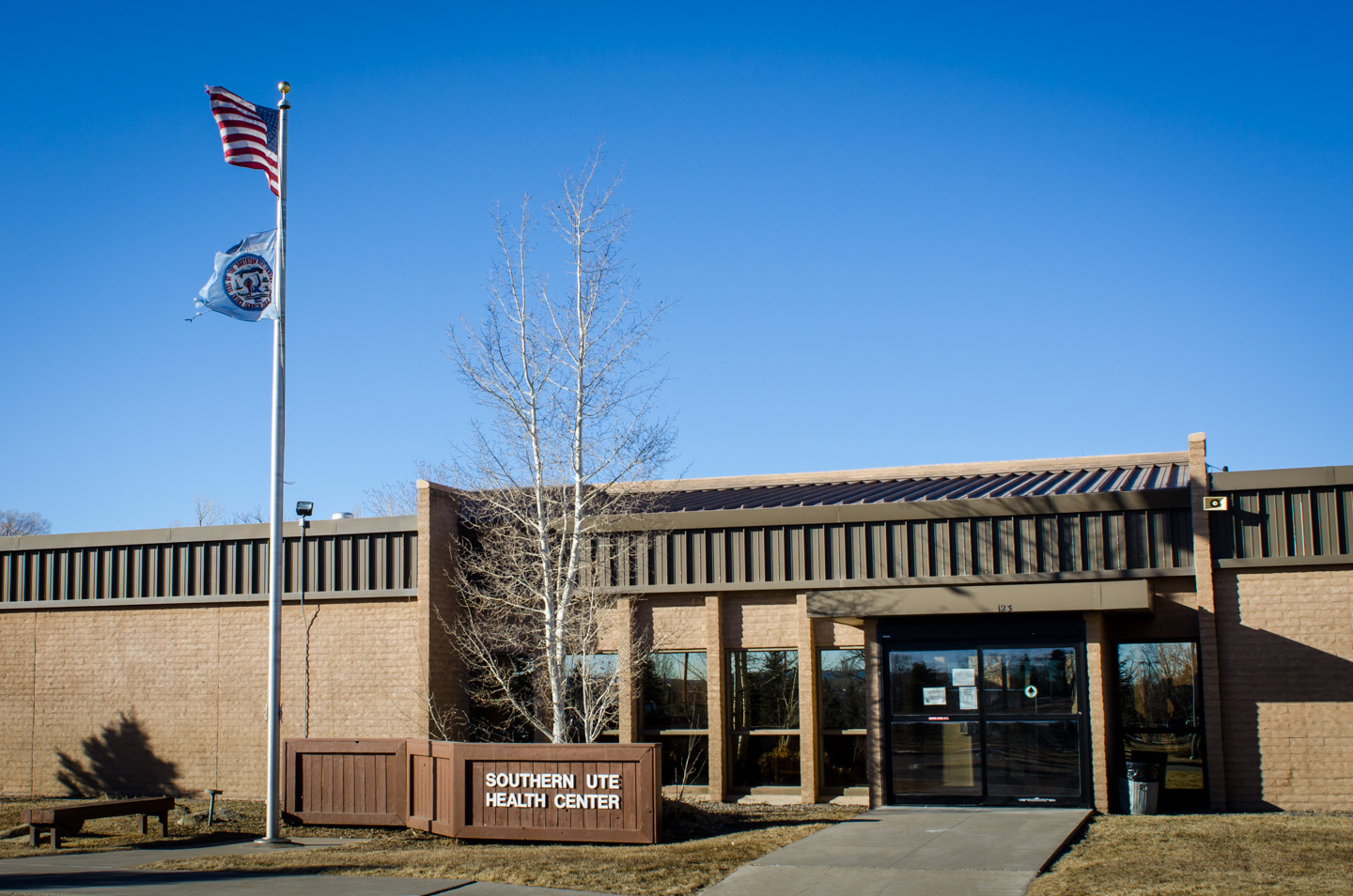Editor’s note: For more stories from our Spotlight on Tribal Health series, click here.
The local health services offered to the Southern Ute Indian Tribe have a long history that began in February 1933 with the opening of the Edward T. Taylor Hospital.
As the needs of the local population changed, the health services moved from the hospital in 1959 and relocated to the clinic building that currently serves as the home to KSUT Public Radio. The expansion of services offered locally continued until the need for a new facility to better serve the tribe required the construction of the present Health Center building on State Highway 172 in 1973.
Growth in services continued through the 1980s and ‘90s, demanding additional space for the clinical services in the Southern Ute Health Center. In 2005, the administrative and finance functions of the Tribal Health Department were relocated to the renovated Taylor Hospital, which had since been renamed the Mouache-Capote Building. This was move provided critical space in the Health Center for direct patient services.
The Health Center houses primary care services, which are the services the membership and other eligible beneficiaries (generally local Native Americans) utilize daily. They provide medical, behavioral health, dentistry, optometry and pharmacy services to the tribal membership and other eligible beneficiaries.
Services that are not available to be provided locally, such as extensive diagnostic exams or surgical services, are referred to other local providers in Durango or elsewhere. Historically, the U.S. Indian Health Service, an agency of the federal government, provided these services.
According to the IHS website, the agency serves 2 million American Indian and Alaska Natives and has 157 facilities. The Indian Health Service, part of the U.S. Department of Health and Human Services, is currently the federal agency with the primary responsibility for fulfilling the United States’ trust obligation to provide health care for Indian people.
The IHS and tribe have established a network of hospitals, clinics, field stations, and outreach programs in the attempt to fulfill the federal trust responsibility and meet the health care needs of the people. The agency has been a frequent target in Washington D.C. amid allegations of mismanagement.
The constant dispute over IHS funding has come at a price for those in Indian Country. Historically, IHS facilities and services have been the subject of numerous complaints, many of which result from a lack of adequate funding and include concerns over the lack of effective services, sufficient funds to pay for necessary referrals, and the quality of care.
As a result of similar concerns, the Southern Ute Indian Tribe decided to assume control of the Health Center through a 638 contract. Upon the execution of that contract in 2009, the tribe was able to utilize federal funds from IHS along with third party-insurance charges (for example, Medicaid and Blue Cross) and additional tribal funding to improve the health services available to the tribal membership.
When the tribe decided to enter into the 638 contract, it identified the state of the Health Center building as an immediate need to be addressed. The volume of services and the needs of the patients have outgrown the present building, which has led to concerns by the membership of inadequate space and lowered satisfaction.
According to Tribal Planner Rodney Class-Erikson, the general opinion from a survey of tribal members is that the building is not adequate to handle the existing client base, let alone the projected changing demographics.
“One of the most interesting survey responses indicates that almost 35 percent more of the tribal member respondents say they would utilize a clinic that met their expectations,” he said. “That means that approximately 80 percent of the respondents would utilize the clinic.”
There is a recognized need to upgrade the facilities presently serving the membership and other Native beneficiaries. As part of this evaluation for new facilities, the Southern Ute Indian Tribal Council retained the services of a Native American architecture consultant firm, Dyron Murphy Architects of Albuquerque, N.M., which has experience in designing facilities that meet the cultural and spiritual needs of Native Americans.
Dyron Murphy Architects is presently completing a needs assessment and an evaluation of the perceptions of the local membership. These findings will be used to design a facility to not only meet needs of the patients and providers, but also provide an understanding of the culture of healing and wellness for the customers who base their care in the Health Center.
“Several of our designers, managers and technicians have deep native roots,” Murphy said. “Their knowledge guides the rest of the team as we mover through the process of designing and creating projects.”
Part of DMA’s portfolio includes the design of the Cañoncito Health Center in Cañoncito, N.M. This 11,595-square-foot facility was designed in collaboration with the Cañoncito Band of Navajos and incorporates traditional Navajo culture. The main entrance faces east, and the entry and waiting area are hogan-shaped. Accents of the four traditional colors associated with Navajo culture are found in the lobby.
On Tuesday, March 19, DMA and the Department of Tribal Planning will host a membership meeting to gather input and update the membership with the findings of the assessment. The meeting will take place at the Sky Ute Casino Resort from 6 to 10 p.m. Food will be provided.
For more information, call the Tribal Planning Department at 970-563-0100.

